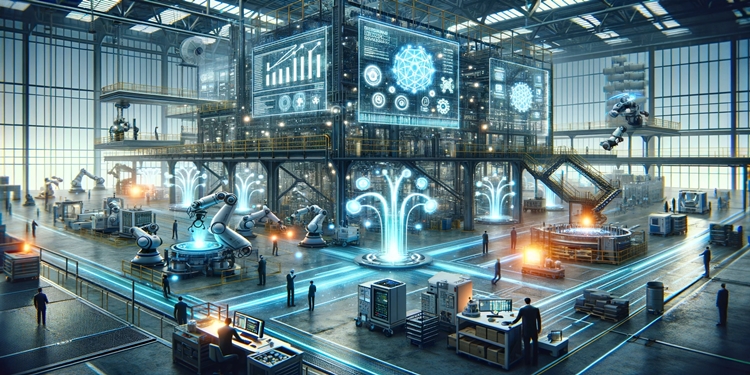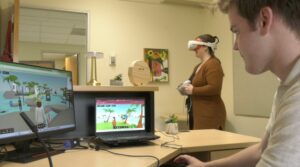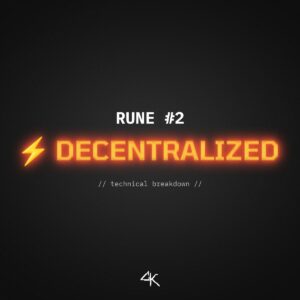Spatial AI: The Future of Human-Computer Interaction and the Metaverse through the OODA Loop
4 min read
At the OODA Loop, our dedicated readers are familiar with our ongoing coverage of exponential technologies and the expected disruptive impact when these technologies converge. In this article, we delve into the convergence of AI, an expanded definition of the metaverse, and blockchain technology as an example of the exponential tech stack coming together (a subtheme within the OODA Almanac 2024).
Spatial Artificial Intelligence (AI)
Spatial Artificial Intelligence (AI) focuses on interpreting and interacting with the physical world in a highly contextualized manner. This concept represents the merging of spatial computing and artificial intelligence technologies.
At its core, Spatial AI allows machines to perceive, reason, and act in our three-dimensional world. It goes beyond just recognizing objects or navigating spaces to understand the context and nuances of those spaces. This includes how objects relate spatially, how they change over time, and how they can be interacted with.
For example, autonomous vehicles heavily rely on Spatial AI to interpret surroundings, make quick decisions, and navigate complex environments safely. They combine sensors and AI algorithms to understand the world’s geometry, identify obstacles, and predict movements of pedestrians and other vehicles. This requires a deep understanding of space and motion, integrating real-time data from various sources to make informed decisions.
In industries, Spatial AI is transforming the way we interact with digital twins, which are virtual replicas of physical systems or environments. By integrating AI, these digital twins can simulate real-world conditions, predict outcomes, and optimize processes that were previously challenging. For instance, in manufacturing, Spatial AI can optimize factory layouts to enhance efficiency and safety, while in urban planning, it can aid in designing more sustainable cities.
The Expanded Metaverse – Categories and Subsectors
While AI took center stage at Meta, the broad concept of “the metaverse” is gradually delineating itself into market-driven subcategories and subsectors:
The Metaverse is an engaging concept captivating the imagination of technologists, entrepreneurs, and creatives. It represents a collective virtual shared space formed by the convergence of digitally enhanced physical reality, augmented reality (AR), virtual reality (VR), and the internet. This vision is ambitious, aiming to create a seamless integration of multiple virtual environments, allowing for the free flow of digital assets and identities across different virtual spaces. Despite the challenges of data privacy, security, and the digital divide, the Metaverse offers a new frontier of human interaction and connectivity.
The Industrial Metaverse is not just about advancing industrial technology; it’s a complete reimagination of how industries function, innovate, and create value.
The Industrial Metaverse blends the digital and physical realms tailored specifically for the industrial sector. It goes beyond adopting VR or AR for consumer entertainment to encompass a comprehensive digital transformation of industrial processes. By leveraging the metaverse, industries can create interconnected, immersive environments where physical and virtual assets coexist and interact seamlessly. This revolutionizes how we design, manufacture, and maintain products and infrastructure, enabling real-time collaboration on virtual prototypes, AI-driven guidance for workers, and predictive maintenance to minimize downtime and enhance efficiency.
This vision is already materializing in industries like automotive and aerospace, where digital twins optimize manufacturing processes, and virtual power plants manage renewable energy flow across the grid, improving efficiency and resilience. Furthermore, the Industrial Metaverse promises innovative workforce training through realistic simulations, reducing accidents and enhancing competency.
The Industrial Metaverse reshapes industries by offering new products and services that optimize, predict maintenance, and drive innovation at an unprecedented pace and scale.
Digital Engineering represents a transformative approach to conceptualizing, designing, and managing engineering projects, particularly in complex systems. It leverages digital twins to create high-fidelity models that mirror physical objects or systems, enabling engineers to simulate, analyze, and test scenarios virtually before any physical manifestation. Digital engineering fosters collaboration and interoperability, breaking down traditional silos and fostering a holistic understanding of projects to navigate complexity and drive innovation.
HPC (High-Performance Computing) plays a crucial role in solving complex scientific, industrial, and defense problems by pushing the limits of computational capabilities. With speeds surpassing general-purpose computers, HPC uses supercomputers and parallel processing to address challenging and data-intensive tasks across various fields like climate research and quantum mechanics.
Virtual Reality (VR) immerses users in computer-generated environments to simulate alternate realities, leveraging hardware like headsets and motion-tracking devices for an immersive experience. AR (Augmented Reality) overlays digital content onto the real world, enriching interactions with surroundings, while MR (Mixed Reality) blends physical and digital objects in real time, revolutionizing how we interact with data, machines, and each other.
Source link
#OODA #Loop #Spatial #Future #HumanComputer #Interaction #Metaverse






